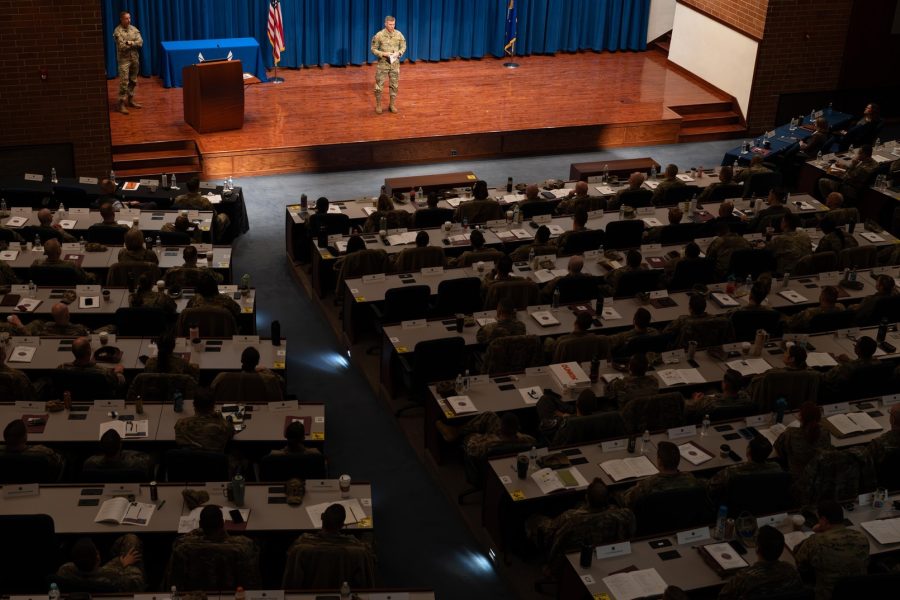JOINT BASE MCGUIRE-DIX-LAKEHURST, N.J.—Most Air Force conferences focus on tactics and technology, but an event held at the U.S. Air Force Expeditionary Center headquarters earlier this year focused on so-called “soft” skills: listening, mentoring, team-building, and connecting with people.
More than 100 USAFEC squadron, group, and wing commanders and senior enlisted leaders from as far as Guam and Germany attended the four-day conference, with the goal of sharpening their tools for building strong unit culture at their home stations.
“We’re not going to directly tell you what you should do or what you should think about culture in your units,” USAFEC commander Maj. Gen. John Klein told the participants. “Really it’s a tool bag, and you can choose the tools that you need based on the situation you face to help you intentionally engineer the culture of your squadron.”
The conference is part of a larger effort Klein started that he calls “Forging Warrior Hearts,” which aims to use culture to strengthen Airmen for challenges both at home and in a possible war with China, which experts warn could be bloodier than any conflict the U.S. military has faced in decades.
Gen. Mike Minihan, Klein’s boss and the head of Air Mobility Command, has championed the phrase “warrior heart,” which emphasizes holistic fitness, teamwork, and “the will to win.” Klein took the idea a step further after a string of deaths by suicide and drug overdose at JBMDL in late 2022 and early 2023. Mental health providers were overloaded, and the support programs rolled out by the Air Force over the years seemed insufficient.
“It made me start thinking, ‘How can we get upstream of this problem?’” he said. “A lot of our programs and messaging were reactive, on the right side of the spectrum. How do we proactively forge true mental health, instead of reactively treating mental illness?”
The answer, Klein argued, is to build up the sense of connection and pride Airmen feel about themselves, their unit, and their mission—strong unit culture.
“You can probably walk into a section and you can tell ‘hey something’s really good here,’” he said at the conference. “There’s a vibe, there’s a spring in their step, and you can just sense the pride, the purpose, the connectedness there in that group, amongst those Airmen.”
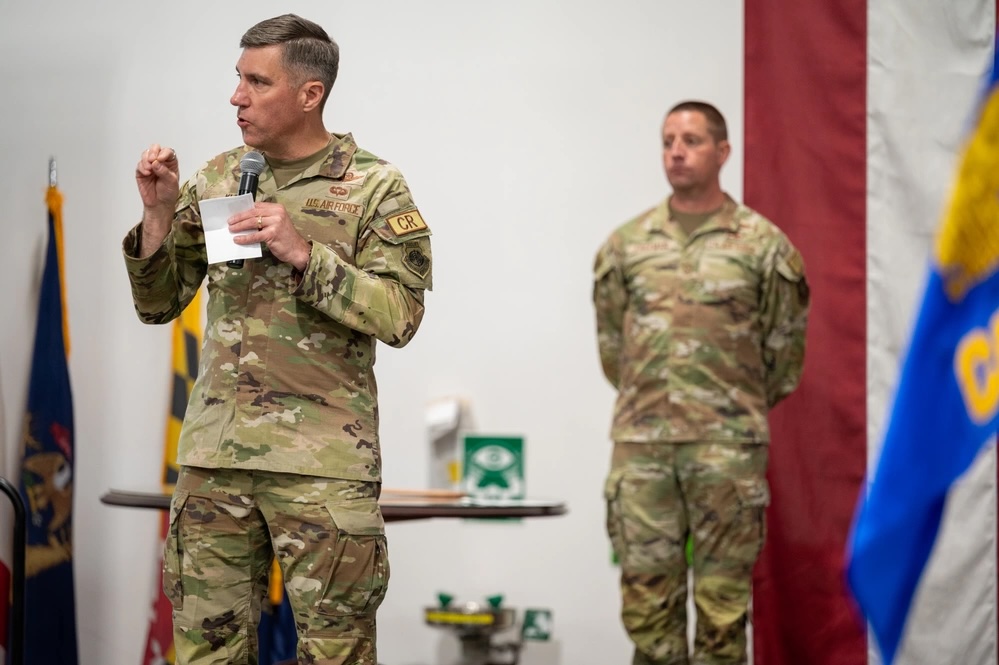
Forging Warrior Hearts is meant to push leaders to engineer strong cultures in their units. But culture and vibes are subjective in an Air Force where flight hours, equipment availability, and other objective results mean everything. Even defining culture is open to interpretation. Klein defined it as “how things are done around here” while his command chief, Chief Master Sgt. Courtney Freeman, defined it as “that’s not how things are done around here.”
“You tell a maintainer to go fix an airplane and they can see with their eyes and know with their actions that they corrected something or moved the needle,” USAFEC command chief Chief Master Sgt. Courtney Freeman told Air & Space Forces Magazine. “With culture, that’s a hard thing to do. You can’t necessarily put your finger on it. You can’t touch it.”
So why fly USAFEC leaders around the world and take precious time away from their units for something that won’t show up on a readiness report? Because it touches everything that does, Klein said. A unit with strong culture, he believes, performs better.
“It’s an investment in the institution of the Air Force,” he said. “How senior leaders talk about our profession—and what we talk about—has an impact upon how our Airmen perform their duties and how they find their way. They are tomorrow’s Air Force, so this is our institutional imperative.”
A Loneliness Epidemic
JBMDL is not the only Air Force base affected by suicide. Sixty-four active-duty Airmen died by suicide in 2022, 51 in 2021, 81 in 2020, and 82 in 2019. Klein believes unit culture plays a key role. He cited the 19th-century sociologist Émil Durkheim, who found that higher rates of suicide corresponded with lower levels of social integration among groups of Catholic and Protestant Europeans. Speakers at the conference traced a similar thread in America today.
“We are in an epidemic of loneliness,” said Dr. Kimberly Dickman, an assistant professor who teaches human relationships and sexuality at the U.S. Air Force Academy.
Dickman cited a 2023 U.S. Surgeon General report that attributed growing isolation to multiple factors, including:
- smaller families
- declining attendance in labor unions, religious groups, and community organizations
- rising economic insecurity
- heavy use of smartphones, the internet and other technologies that can isolate individuals
- the COVID-19 pandemic
Loneliness is associated with a greater risk of cardiovascular disease, dementia, stroke, depression, anxiety, and premature death, wrote U.S. Surgeon General Dr. Vivek Murthy.
“The mortality impact of being socially disconnected is similar to that caused by smoking up to 15 cigarettes a day,” he noted. “And the harmful consequences of a society that lacks social connection can be felt in our schools, workplaces, and civic organizations, where performance, productivity, and engagement are diminished.”
Loneliness can affect any age group, but data shows higher rates among young adults in their late teens and early 20s—the same age group of many Airmen and Guardians. As of March 2023, 43 percent of the active duty enlisted Air Force and Space Force were below the age of 26. Those young troops account for about half of all military suicides, according to a 2023 report made by the Pentagon’s Suicide Prevention and Response Independent Review Committee (SPRIRC).
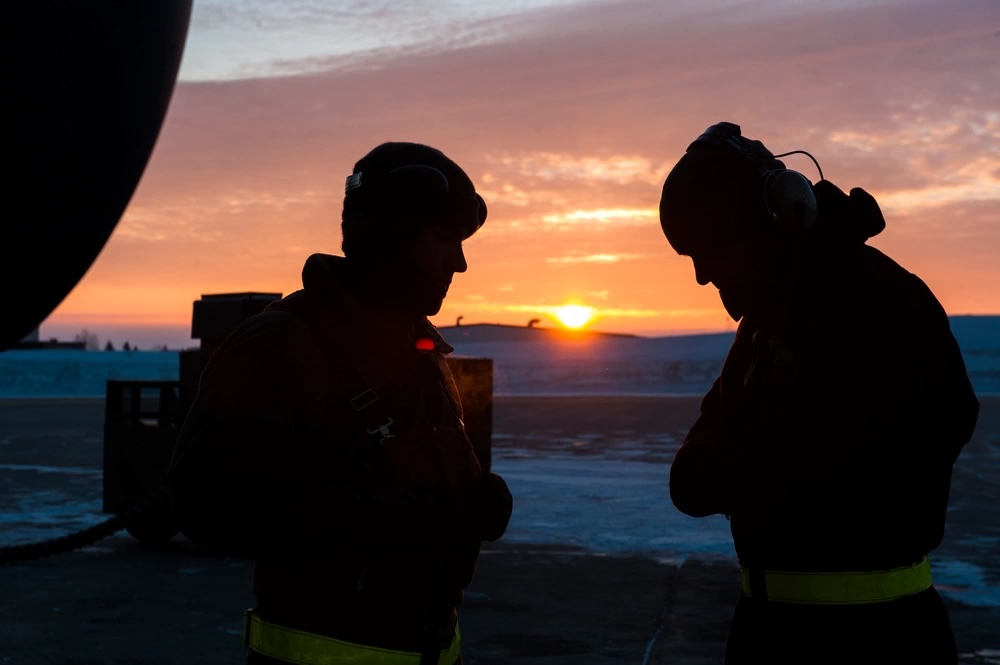
Social isolation is not the only factor in mental health. Many Airmen do not have enough money for food and housing, while others struggle with staff shortages, dilapidated dormitories, not enough slots for child care, and faulty computer programs that disrupt vital work tasks, SPRIRC found.
Indeed, when asked what he would fix immediately, one staff sergeant at the conference spoke for many of his peers when he answered “more people.”
“If I could wave a magic wand, it would definitely just be more people to take stress away from each person,” he said. “That way they will have energy to go out after work instead of just sitting at home taking a nap and becoming introverted.”
Staffing, rent prices, and child care slots are not entirely under a wing commander’s control, but Klein said strong connections can help leaders act on them before they become a crisis, and develop more effective solutions.
“Those types of issues don’t emerge overnight,” he said. “They can be very complex, and if the leaders are not paying attention to those things that are important for the health and well-being of our Airmen and their families, then it’s entropy: things can slip and slide until it becomes a problem.”
‘We Had to Create Space for That”
2017 was a difficult time for then-Brig. Gen. John Nichols and Chief Master Sgt. James Lyda to take command at the 509th Bomb Wing at Whiteman Air Force Base, Mo. The wing had suffered seven deaths by suicide over the past 14 months, and an eighth occurred shortly after the change of command.
“It was pretty heinous, we had people running each other off the road, we had people who were not just getting DUIs but getting DUIs and killing civilians on the road,” the now-retired Lyda said at the conference. “It was a tough place to be.”
Isolation was part of the problem: a survey found that the most common complaint among Airmen at Whiteman was “I don’t fit in, I don’t feel like I belong, I’m not connected to the mission and I don’t have a purpose,” Lyda recalled.
The general and the chief decided that they were “going to get out of our offices and connect with Airmen,” he said.
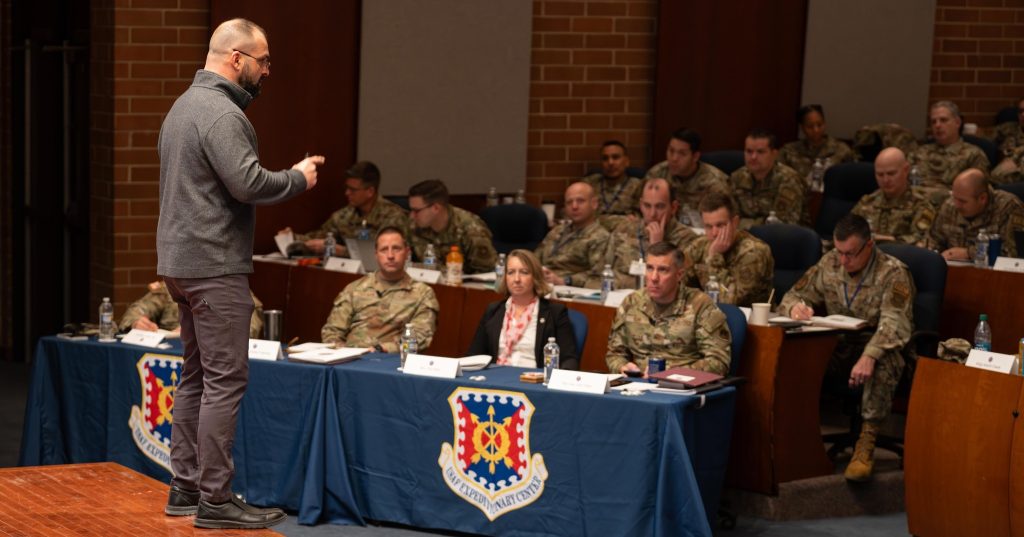
Their first order of business was to host a weekly get-together for all Airmen and their families at the base club, where Lyda said he and Nichols talked with every single Airman individually.
“We didn’t do it because we were going to fix it, because we weren’t,” the chief said. “We did it to set an example. So that our seniors and our masters and our lieutenant colonels and our majors would buy into it. Whatever your boss finds interesting, you find fascinating, right?”
It paid off: Lyda said the base went from eight suicides in 16 months to zero in the next 24.
“It was amazing the culture shift that happened when we started reconnecting with people on a real level,” he said.
It worked in the Army too. During his time leading infantry and Ranger battalions, Army Col. Michael Kloepper found that fewer Soldiers reported anxiety on health and wellness surveys when they felt connected with their squad. But building connections requires time and space.
“When you create space for people to work out together, and then go eat together, there’s something really tight there,” Kloepper said at the conference. “We had to create space for that: no meetings before 9:30 so that people have time to eat together. And we had to invest in our dining facilities because people were choosing to go eat at other places because the food wasn’t very good.”
Connections often happen naturally on deployments, said Staff Sgt. Richard Gregory, a distribution supervisor with the 87th Logistics Readiness Squadron at JBMDL.
“You build a wild amount of camaraderie when you’re deployed, just because you have to find ways to have fun,” he said. “People come to stateside bases and it’s a little different here, no one wants to hang out.”
When he was stationed at Joint Base Charleston, S.C., for example, Gregory often spent weekends going to the beach or hanging out in the city rather than staying on the base. But at rural locations such as JBMDL, where there are not as many opportunities to have fun off-base, Gregory said he appreciated his squadron commander putting together group 5k runs and an event called “Combat Dining-Out,” where squadron members got together for water gun fights, food, and drinks.
“Everyone’s on the same level pretty much at that point, so that was actually really enjoyable,” he said. “Those don’t happen at every base. They’re pretty rare.”
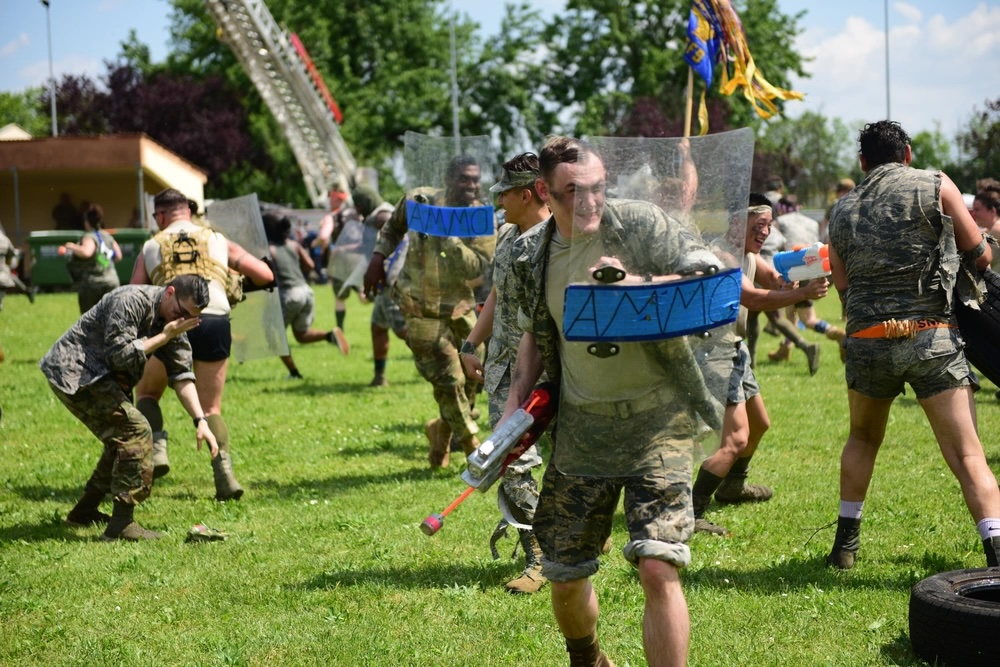
Which activities work best for building cohesion is open to debate. When Klein and Freeman first laid out the basics of Forging Warrior Hearts in a memo and an op-ed last May, commenters on the popular unofficial Facebook page Air Force amn/nco/snco rebuked many of their suggested activities, such as formation runs, group physical training, blues inspections, wing parades, and bringing roommates back into dorm rooms.
Still, some at the conference thought the ideas had merit: preparing for blues inspections brings Airmen closer together to check each other’s uniforms; unexpected rewards such as a day-off for the best-dressed can build good habits; PT gets the endorphins flowing; and while roommates can be annoying, they can also form strong bonds with each other.
No matter what tools or activities a leader chooses, Klein emphasized that a one-off event is not enough to improve unit culture: it takes consistent effort.
“The trap is the business of the day-to-day,” he said. “So you’ve got to have a plan. Otherwise you’re overcome by events.”
Blindspots
Cohesion acts as insurance against what Kloepper called “trust-denigrating behaviors:” DUIs, suicides, drug abuse, sexual assault and harassment, discrimination, and other negative outcomes. But it can also provide a first line of defense so that Airmen do not have to rely on mental health services to overcome day-to-day challenges.
Kloepper envisioned “a continuum of care” where service members can discuss those day-to-day hardships, such as a failed test or a breakup, with their peers and mentors, saving limited mental health resources for more serious issues or chronic conditions. Then-Chief Master Sergeant of the Air Force JoAnne Bass advocated for a similar system.
“When I talk to our mental health providers, they tell me that out of every 10 Airmen that come to mental health, only two need clinical mental health support; the other eight just need to know someone cares,” Bass said at a leadership symposium in February. “There is a shortage of mental health providers, but there is not a shortage of leaders and wingmen. We have to embrace community and talk to one another.”
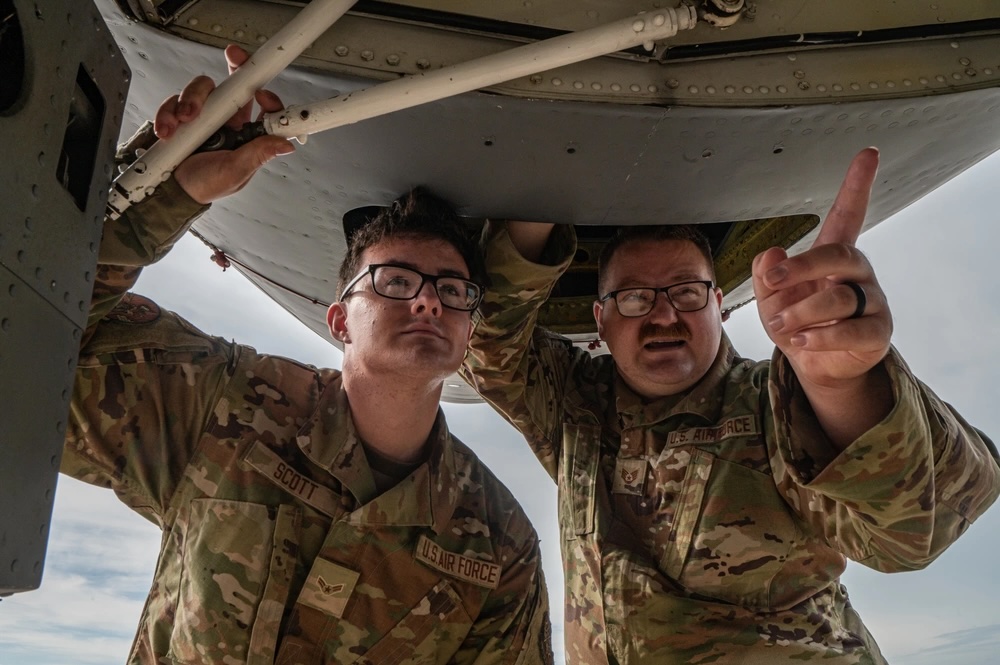
Staff Sgt Edlin Rodriguez-Medina, also of the 87th Logistics Readiness Squadron, felt the power of a caring mentor after he moved to a new assignment at Nellis Air Force Base, Nev. Prior to that, Rodriguez-Medina was stationed in Honduras unaccompanied for a year, and he was having difficulty readjusting to life as a father in a new unit while also preparing for a promotion to staff sergeant and all the responsibilities of being a new NCO.
“I can’t say I was going through the best time in my career,” he said, but an experienced staff sergeant helped him get through it. “He had a great heart and could pretty much mold you to be the best version of yourself. I think just having him by my side and having one-on-one conversations with him definitely helped out.”
The importance of building relationships is not new. The legendary Air Force fighter pilot Brig. Gen. Robin Olds wrote in his memoir about learning it from his predecessors, men like Gens. Carl ‘Tooey’ Spaatz and Jimmy Doolittle, then using it to change the culture of the 8th Tactical Fighter Wing during the Vietnam War.
“When we weren’t flying, I was stalking through the base, looking over their shoulders, visiting the squadrons and hanging out with them at the O-club,” he wrote. “Pretty soon, I knew all of their names.”
The data bears it out. In its 2023 report, the SPRIRC found that “military personnel who positively view their leadership report better physical and mental health, reduced mental health stigma, and increased engagement in help-seeking behaviors.”
But while strong leadership is celebrated in the Air Force, the skills for fostering connection and trust can go to seed amid institutional blindspots and the daily struggle to meet requirements.
“Sometimes, organizations have mechanisms to quietly defeat programs to improve them,” said Dr. Daniel Connelly, a retired Air Force lieutenant colonel who teaches leadership at the Air Command and Staff College. “It’s important for any military to educate its leaders so they can identify such mechanisms and creatively respond to the challenges they present.”
Several of the speakers at the culture conference went over basic techniques for building connections, such as making eye contact, sharing vulnerability, developing emotional intelligence, and giving positive reinforcement. Do Air Force leadership schools need to teach those lessons better?
“I think everybody knows that culture is important,” Klein said. “And in a lot of cases, people just need to be reminded.”
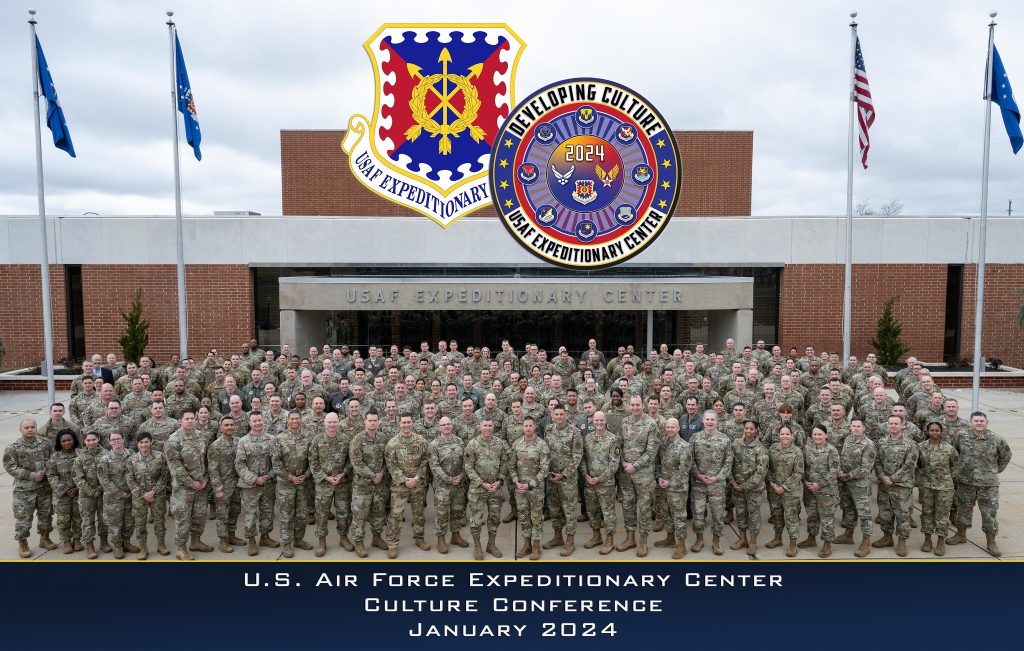
As proof, a survey taken before the conference showed that 67 percent of the participants rated their squadron culture as “strong” or “extremely strong,” but many of them reassessed after three days at the conference.
“Sitting in your office at your squadron, you did the survey and said ‘hey I think we’re great’” one participant said. “And then you spend a little time here talking about it and went ‘h, I think I’ve got a little bit of work to do.’”
Blindspots are inevitable, which is why subordinates must feel safe calling them out, said retired Maj. Gen. Dondi Costin, former Air Force Chief of Chaplains.
“As a general rule, we think we’re doing better than our people think we’re doing,” he said. “So just ask them. Trust me, they will tell you. Maybe not at first. They’re scared of you, which might be the first problem.”
Willing to Die for Each Other
Ultimately, “Forging Warrior Hearts” is meant to help prepare the Air Force for war. Klein hopes cultivating resilience and strong bonds at home will help Airmen get through challenges not only in-garrison, but also in conflict.
“If it’s not aligned to your mission and who you are as a unit, then it’s just a club,” Klein said.
In the same vein, Kloepper said task cohesion—where members of a group share a sense of purpose—is more powerful than social cohesion, where members of a group feel familiar with each other.
“When you share a common sense of purpose, you’re willing to die for each other, for somebody with whom you have nothing in common in background but everything in common in values, standards, and purpose,” he said.
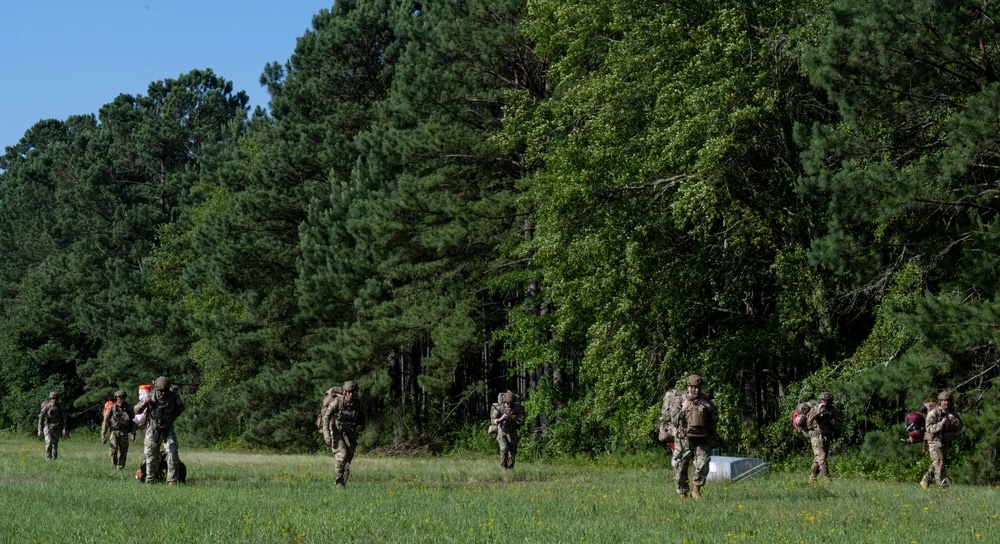
After the conference ended and the participants scattered to their units, how will Klein know if USAFEC’s investment paid off? The general said leaders will be expected to report back on how they are owning culture in their usual biweekly activity report, and Klein and Freeman will see for themselves if it’s effective during their regular base visits.
“You can feel it when you walk in,” Freeman said. “You can get a sense talking with the Airmen, talking with the leadership. It’s something that you feel when you go into formations.”
It is subjective, but “some think that the most important qualities in a military’s life and performance never can be described in purely numerical terms,” said Connelly, the Air University leadership professor.
Klein and Freeman’s tenure at the helm of USAFEC will end this summer, but Klein hopes the culture conference will continue afterwards in some form. In fact, he said attendees told him they wanted a version of the conference every time the center changes command teams.
“It would be a starting point for the new set,” Klein said. “I would like to see that, but it’s up to the next commander.”
The general hopes the wider Air Force adopts a similar mindset where leaders “own” the culture of their units and proactively nurture it.
“Culture needs to come to the forefront of all of our minds as leaders,” he said. “I think what good culture boils down to is trust and belief: when you get people believing in what they’re doing, and in each other, you’re in a good place.”
